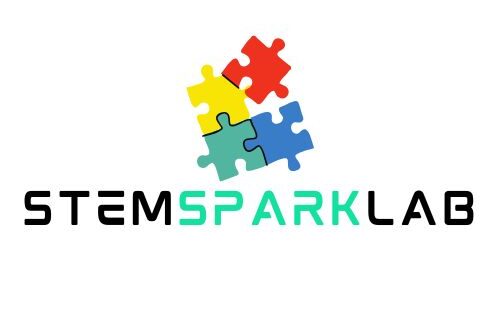5 STEM Goal Trackers That Keep You Motivated and On Track
We may earn a commission for purchases made using our links. Please see our disclosure to learn more.
You know that spark you feel when you set a new STEM goal—learn Python, finish a robotics build, finally ship that app? And then… real life shows up. The calendar fills, the energy dips, and your goal quietly slides to “someday.” I’ve been there. That’s why goal trackers are not just stationery or apps; they’re structure, momentum, and a gentle nudge on the days you need it most.
In this friendly guide, we’ll walk through how goal trackers work, how to pick the right one for your style, and five Amazon-ready picks you can plug into your routine today. You’ll also get a research-backed section, a comparison table, practical tips, and FAQs. My aim: help you feel focused, calm, and genuinely excited to take the next tiny step.
What Makes Goal Trackers Work for STEM Learners
STEM goals are rarely one-and-done. They’re multi-step builds, test–fix–repeat loops, and “this didn’t work—let’s try again” kind of days. A goal tracker breaks your ambition into visible, doable pieces so you can:
- See the next step at a glance (less decision fatigue).
- Celebrate small wins (motivation fuel).
- Adjust quickly when experiments fail (because they will).
- Stay consistent during busy weeks.
Think of a tracker as scaffolding while you build your rocket. It doesn’t fly the mission—but without it, the build gets wobbly.
The Psychology of Visible Progress
Why does checking a box feel so good? Because your brain rewards completion with a little hit of motivation. No tracker means your wins fade fast. Goal trackers keep your progress visible, and visibility breeds momentum. It’s like watching XP bars fill up in a game—you want to keep going.
Paper vs. Digital vs. Hybrid: Which Goal Tracker Fits You?
- Paper Trackers: tactile, screen-free, reflection-friendly.
- Digital Trackers: searchable, collaborative, cloud-based.
- Hybrid Trackers: write by hand, store in the cloud.
Pick the medium that you’ll actually use on your sleepiest day. That’s the true test.

How to Break Big STEM Goals into Trackable Milestones
Let’s say your goal is “publish an iOS app.” Break it like this:
- Milestone 1: Learn Swift fundamentals.
- Milestone 2: Build UI for three screens.
- Milestone 3: Implement core logic.
- Milestone 4: Beta test with five friends.
- Milestone 5: Submit to App Store.
Then turn each milestone into bite-sized tasks you can finish in 25–60 minutes. It is easy to begin with one small step.
The “Minimum Viable Step” Method
On low-energy days, reduce your task to the MVS—the smallest action that still counts as progress:
- Read two pages of a data structures book.
- Solve one LeetCode easy.
- Wire one sensor.
- Refactor one function.
Tiny steps compound. And compounding is the quiet superpower of goal tracking.
Routines That Make Goal Trackers Stick (and Not Collect Dust)
- Anchor it to a habit you already do (after breakfast, open your tracker).
- Time-box it with a 25-minute focus block.
- Review weekly: What worked? What needs tweaking?
- Reward it: After a tough task, enjoy a small treat or a short walk.
- Reset kindly after slips. No guilt. Just continue.
Culturally Diverse Approaches to Tracking
- Kaizen (Japan): steady, small improvements—perfect for daily checkboxes and habit streaks.
- Pomodoro (Italy): 25-minute sprints with brief breaks—great for tough problem sets.
- Agile/Kanban (global dev culture): visual boards for work-in-progress—ideal for team labs and capstone projects.
Use the language that motivates you—craft, game, or science—then match a tracker to it.
Who This Guide Is For (Search Intent, in plain English)
- Students aiming to organize study plans and labs.
- Educators and parents supporting STEM learning at home.
- Makers and pros who want project visibility and momentum.
- Anyone who wants goal trackers that feel human, not harsh.

Amazon Picks: 5 Goal Trackers You Can Start With Today
1) Panda Planner Pro (Undated Daily/Weekly/Monthly)
What it is: A beloved paper planner that blends gratitude, priorities, and task planning to reduce overwhelm.
Features
- Undated daily, weekly, monthly spreads
- AM/PM prompts for focus and reflection
- Habit and priority sections
Pros
- Structure lowers decision fatigue
- Reflection builds resilience during tough sprints
- Start any time of year
Cons
- Paper-only (no built-in cloud sync)
- Works best if you write daily
Use cases
- Semester planning for physics, chem, or calc
- Robotics team sprint planning
- Thesis timelines
Reviews (common themes)
- Praised for clarity and motivation
- Some wish for more blank project pages
2) Rocketbook Fusion Smart Reusable Notebook
What it is: A reusable notebook that scans to cloud services. Handwrite your goals, scan with the app, then wipe the page.
Features
- Multiple planning templates
- Works with Google Drive, Dropbox, OneNote
- Reusable with a damp cloth
Pros
- Eco-friendly and cost-effective
- Handwriting benefits + digital backup
- Great for lab notes and project logs
Cons
- Requires special pens
- Scanning workflow has a small learning curve
Use cases
- Lab progress tracker that syncs to a class folder
- Team design logs
- Math derivations you want searchable later
Reviews (common themes)
- Loved for hybrid workflow and portability
- A few mention scanning speed when in a rush
3) Clever Fox Planner PRO (Undated)
What it is: A structured productivity journal with goal-mapping pages, monthly/weekly planning, and habit tracking.
Features
- Vision/goal maps and areas-of-life planning
- Weekly reviews and habit sections
- Thick paper, sturdy cover
Pros
- Clear layout for long-term STEM goals
- Balanced mix of reflection and execution
- Durable build
Cons
- More prompts than minimalists prefer
- Slightly heavier than slim notebooks
Use cases
- Mapping a year-long research project
- Tracking study habits for standardized exams
- Building a coding interview roadmap
Reviews (common themes)
- Applauded for structure and paper quality
Some wish for detachable pages
4) Full Focus Planner by Michael Hyatt (Quarterly)
What it is: A quarterly goal system that forces focus on a few “Big 3” priorities per day.
Features
- Quarterly goal pages
- Daily “Big 3,” weekly preview, and ideal week
- Routines templates
Pros
- Sharp focus for busy semesters
- Great for those juggling work + school
- Routine pages support consistency
Cons
- Quarterly replacement adds cost
- May feel strict if you prefer flexible days
Use cases
- Capstone projects with clear deadlines
- Teaching loads + research balance
- Bootcamp schedules
Reviews (common themes)
- Loved for focus and rhythm
- Some prefer more blank note space
5) Moleskine Smart Writing Set (Paper Tablet & Pen+ Smart Pen)
What it is: A premium analog–digital combo. Write in a special notebook and see strokes appear in the app in real time.
Features
- Smart pen captures handwritten notes
- Real-time digitization in companion app
- Export notes as PDFs
Pros
- Luxury feel with digital convenience
- Great for sketches, circuits, diagrams
- Beautiful archival of your progress
Cons
- Higher price point
- Proprietary ecosystem
Use cases
- Recording derivations, design sketches, circuit plans
- Sharing notes with lab partners
- Polishing diagrams for presentations
Reviews (common themes)
- Praised for handwriting fidelity
- Some note occasional pen calibration needs

Side-by-Side Comparison Table
| Product | Format | Best For | Standout Strength | Reusable? | Flex Level | Price Tier* |
| Panda Planner Pro | Paper | Students, solo makers | Daily/weekly structure + reflection | No | Medium | $$ |
| Rocketbook Fusion | Hybrid | Cloud-first learners | Scan-to-cloud + templates | Yes | High | $$ |
| Clever Fox Planner PRO | Paper | Long-range goal mapping | Vision pages + habit tracking | No | Medium | $$ |
| Full Focus Planner | Paper (Quarterly) | Busy pros, educators | “Big 3” priority discipline | No | Medium | $$–$$$ |
| Moleskine Smart Writing Set | Hybrid (Smart) | Visual thinkers, premium feel | Real-time digitization | Partially (digital) | High | $$$ |
*Relative tiers for comparison only.
Real-World Use Cases for Students, Parents, and Teams
- Students: Plan lab work, exam prep, and capstones; track problem sets; log debugging sessions.
- Parents & Educators: Support at-home STEM learning with daily checklists and “show your work” logs.
- Teams & Clubs: Share milestones, assign tasks, and hold short weekly reviews to keep the build moving.
Pro tip: Post a weekly “progress snapshot” in your group chat. Public progress creates friendly accountability.
Troubleshooting: If Your Goal Tracker Isn’t Working
- Too ambitious? Shrink tasks to the Minimum Viable Step.
- Too busy? Switch to weekly reviews + two critical checkboxes per day.
- Falling behind? Schedule a catch-up block—no phone, 25 minutes.
- Bored? Gamify: award yourself points, badges, or tiny treats.
- Stalled? Pair up with a study buddy or teammate for accountability.
Research-Backed Benefits of Goal Tracking
- In the Dominican University goal-setting study, participants who wrote goals and used accountability strategies were more likely to achieve them than those who only thought about goals. The research highlights the power of writing, committing to actions, and reporting progress—exactly what goal trackers make easy.
- A European Journal of Social Psychology study found that habit formation takes a median of ~66 days (with a wide 18–254-day range). Translation: systems beat willpower. A tracker helps you show up consistently long enough for actions to become automatic.
FAQs
Are digital or paper goal trackers better?
Neither wins universally. Paper boosts focus and reflection. Digital shines for search, sharing, and backups. Hybrid gives you both.
How often should I update my tracker?
Daily is ideal for momentum. Add a short weekly review to adjust milestones and celebrate what went right.
Can kids use goal trackers for STEM?
Yes. Keep it simple: one daily task, one weekly project step, one fun reflection. Gamified systems help younger learners stick with it.
What if I always fall off after a week?
Lower the bar. Use Minimum Viable Steps, anchor tracking to a routine you already do, and pair effort with a tiny reward.
How can I choose the best product?
Choose the tool you’ll reach for on your most tired day. If the friction is low, consistency becomes natural.
Quick Start Checklist (Pin This)
- Define one clear STEM goal.
- Break into 5–7 milestones.
- Turn milestones into daily/weekly tiny steps.
- Pick a tracker you’ll actually use.
- Book two 25-min focus blocks this week.
- Do a 5-minute weekly review.
- Celebrate one small win every week.
Helpful Resource: Brain-Boosting Puzzles for Off-Days
Need a motivating “light day” activity that still sharpens your problem-solving? Explore an editor-curated roundup of the best puzzle games to keep your brain engaged between study sprints: smart puzzle picks for STEM minds.
Conclusion: Progress You Can Feel, Results You Can Measure
Your goals don’t need a harder push—they need a clearer path. A great goal tracker gives you that path: small steps, honest reviews, simple rewards, and a record of how far you’ve come. Whether you prefer Panda Planner’s structure, Rocketbook’s hybrid magic, Clever Fox’s goal maps, Full Focus’s tight priorities, or Moleskine’s premium analog-digital flow—pick one, commit lightly, and let consistency do its quiet work.
You don’t need perfect days. You need present days. One checkbox at a time, you’re building something you’ll be proud of.




